Types of Installation Refractory Methods
Articles
Installation Methods: Part 1: Understanding Types of Refractories
Types of Installation Refractory Methods
- Vibration casting using forms
- Pump casting using concrete pump and forms
- Shotcreting using a concrete pump and shotcreting activator
- Precast and dried shapes
- Pneumatic gunning using gunning mixed
- Pneumatic ramming using plastics
Installation of Refractory, Vibration Casting Using Forms
- Traditional installation method
- Mix castable in a paddle mixer, cast behind forms, and vibrate into place
- Water addition can be measured and consistent for consistent properties
- Slow, batch-type installation rate if installing high volume
Brands: Vibration Casting Using Forms
- Rescocast (conventional cement)
- Pacocast (conventional cement)
- Vibrocast (low cement, 45% to 85% alumina)
- Quikturn (low cement, rapid heat-up)
- EZ EST (no cement, 60% alumina to 70% alumina; colloidal silica-bonded)
- EZ Cast (low cement, 45% to 98% alumina)
- R-Max (abrasion-resistant)
Installation of Refractory, Pump casting using a concrete pump
- Double piston, swing valve pump most common
- Mix castable in paddle mixer on the pump and pump through hoses, behind forms
- Water content can be measured and consistent for consistent properties but higher water content needed to pump (compared to vibration casting)
- Higher installation rate when continuously mixing and pumping
- Best for high volume installation
Installation of Refractory, Shotcreting
- Double piston swing valve pumped used
- Mixed castable pumped through the hose
- Shotcrete nozzle attached on the end of the hose
- Shotcrete activator added at the nozzle
- Pumped castable sprayed onto the wall
Brands: Pump Casting and Shotcreting
- Vibrocast PC (low cement 45% to 60% alumina)
- Quikturn PC (low cement, rapid heat-up)
- EZ EST PC (no cement, 60% alumina to 70% alumina; colloidal silica-bonded)
- EZ Cubed (low cement; 45% to 85% alumina)
- R-Max PC (abrasion-resistant)

